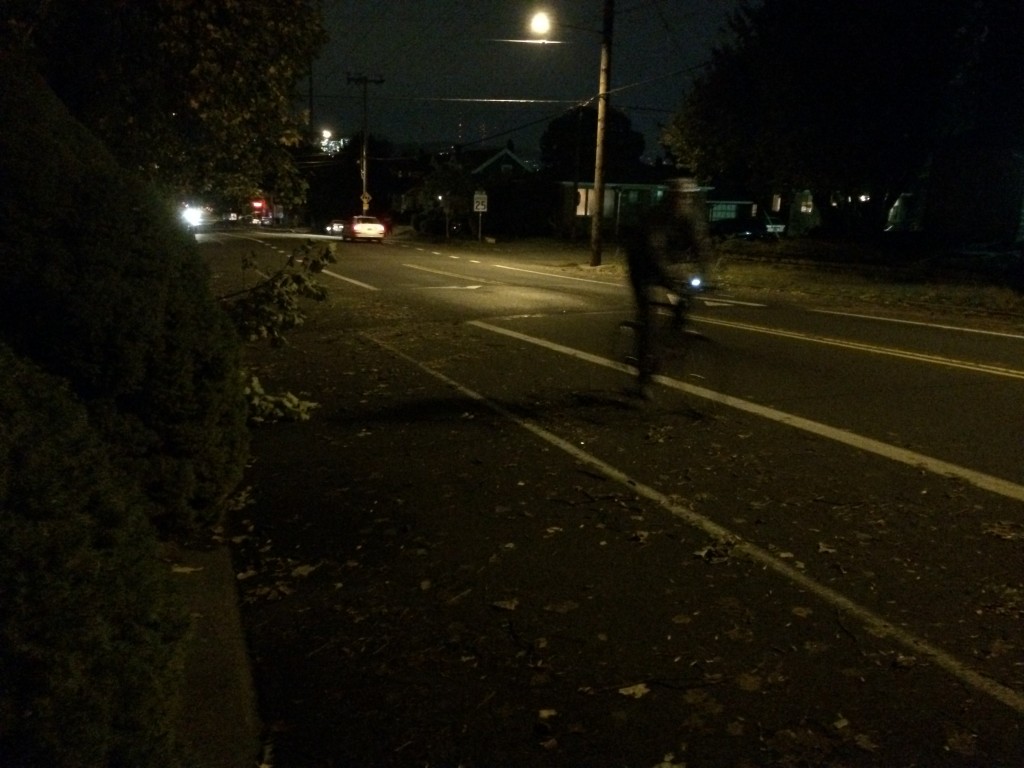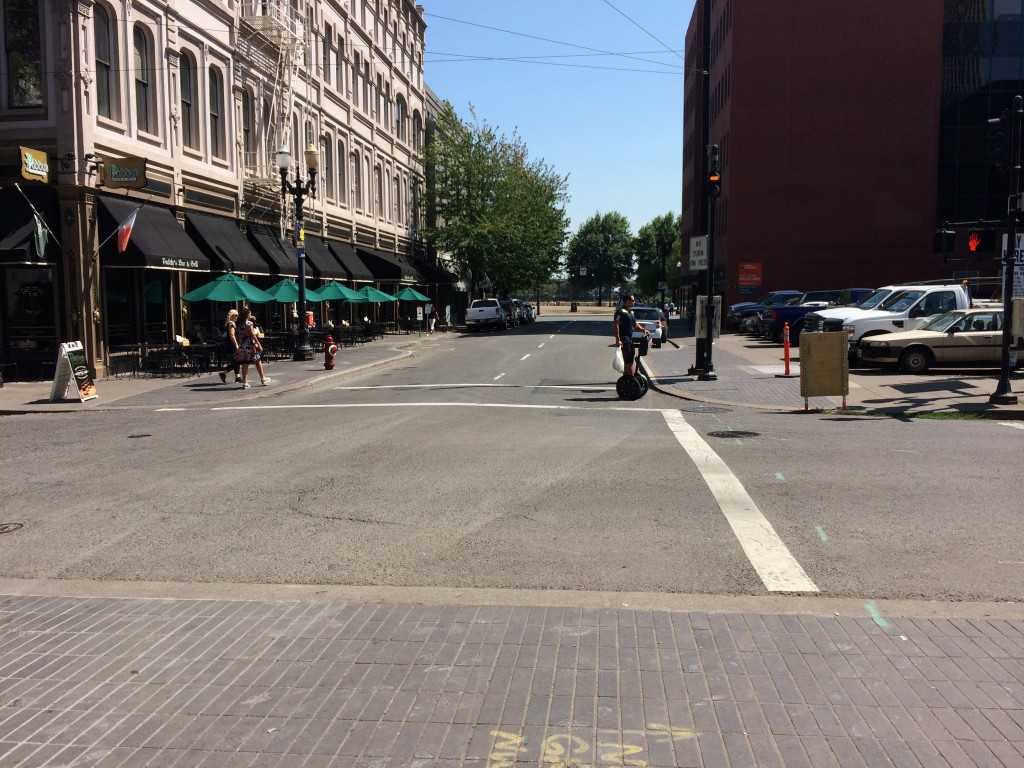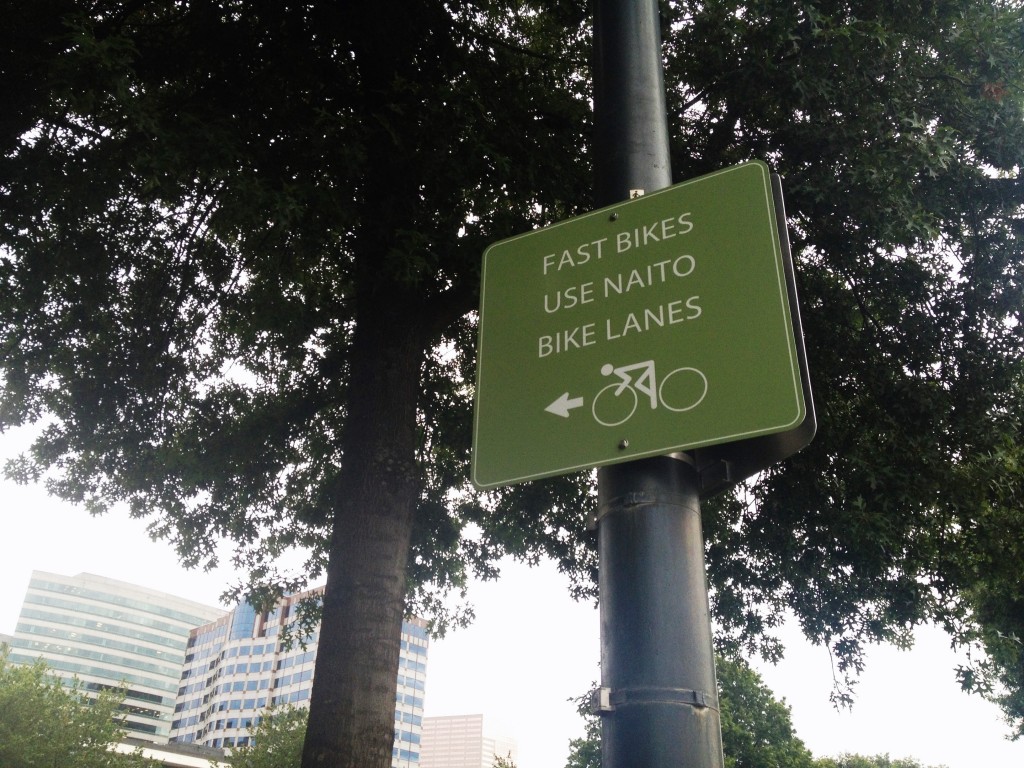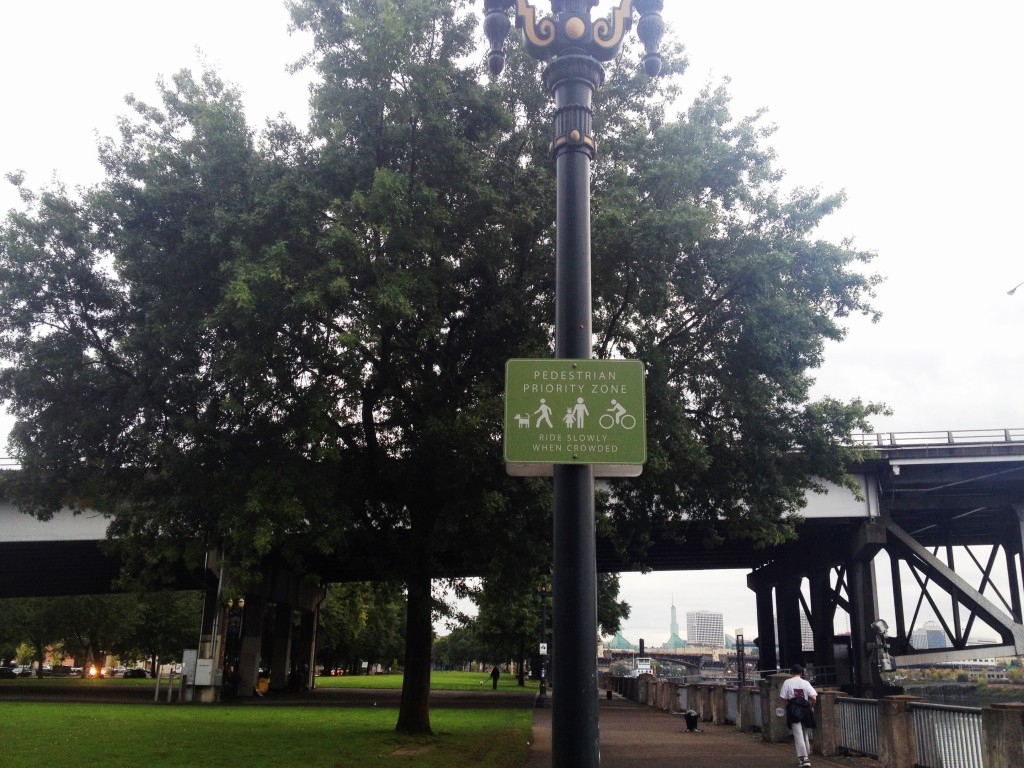As the rains return to Oregon, the sun sets earlier, and we return to standard time, I see more bike lights illuminated on my rides to and from work.
Oregon law requires that bicycle operators use lights in “limited visibility conditions.”
Excerpt from ORS 815.280 Violation of bicycle equipment requirements
(1) A person commits the offense of violation of bicycle equipment requirements if the person does any of the following:
(a) Operates on any highway a bicycle in violation of the requirements of this section.
(b) Is the parent or guardian of a minor child or ward and authorizes or knowingly permits the child or ward to operate a bicycle on any highway in violation of the requirements of this section.
(2) A bicycle is operated in violation of this section if any of the following requirements are violated:
. . .
(c) At the times described in the following, a bicycle or its rider must be equipped with lighting equipment that meets the described requirements:
(A) The lighting equipment must be used during limited visibility conditions.
(B) The lighting equipment must show a white light visible from a distance of at least 500 feet to the front of a bicycle.
(C) The lighting equipment must have a red reflector or lighting device or material of such size or characteristic and so mounted as to be visible from all distances up to 600 feet to the rear when directly in front of lawful lower beams of headlights on a motor vehicle.
There are several key definitions to know in order to fully understand this law.
“Highway” is a term used in Oregon’s Rules of the Road that leads to a lot of confusion. Surprisingly to some people, a highway as defined in the law doesn’t just mean those roads designated as highways but “every public way, road, street, thoroughfare, and place” that are “used or intended for the use of the general public for vehicles or vehicular traffic as a matter of right.” ORS 801.305. This extends to the sidewalk, which is defined as “a portion of the highway”. ORS 801.485. What this means is that a bicycle operator is required to use lights even while operating on the sidewalk or any other area open to the public, like parking lots.
“A bicycle or its operator must be equipped” means that a person who clips a light to their messenger bag or helmet is in as much compliance with the law as someone with a light or reflector attached to their bicycle.
Another part of this law that is tricky is that “limited visibility conditions” does not just include nighttime. The law defines it as anytime from sunset to sunrise, which is obvious, but also any other time that “due to insufficient light or unfavorable atmospheric conditions” you are not able to discern other persons and vehicles at a distance of 1,000 feet. 1,000 feet is a long distance. For instance, in downtown Portland, 1,000 feet is five city blocks. So, the law requires the use of lights if the darkness, rain, fog, mist, or snow makes it difficult to see.
Bicycles sold are usually equipped with only reflectors, not lights. Oregon law requires a front white light in limited visibility conditions. A front clear reflector will not suffice to satisfy the equipment requirement. A rear red reflector, or rear red reflective material, will, so long as it can be seen from 600 feet to the rear (3 downtown Portland city blocks).




